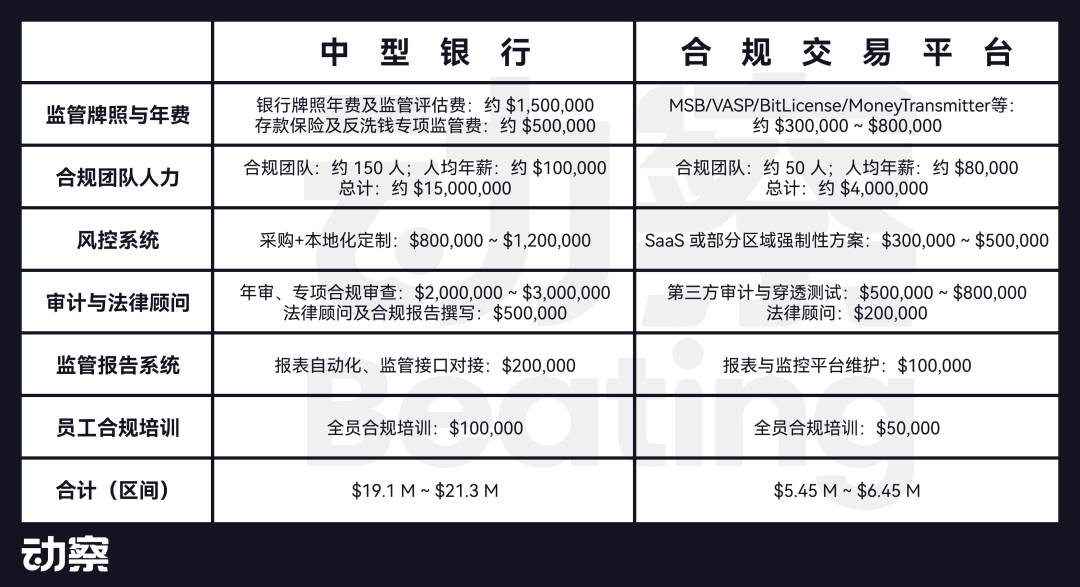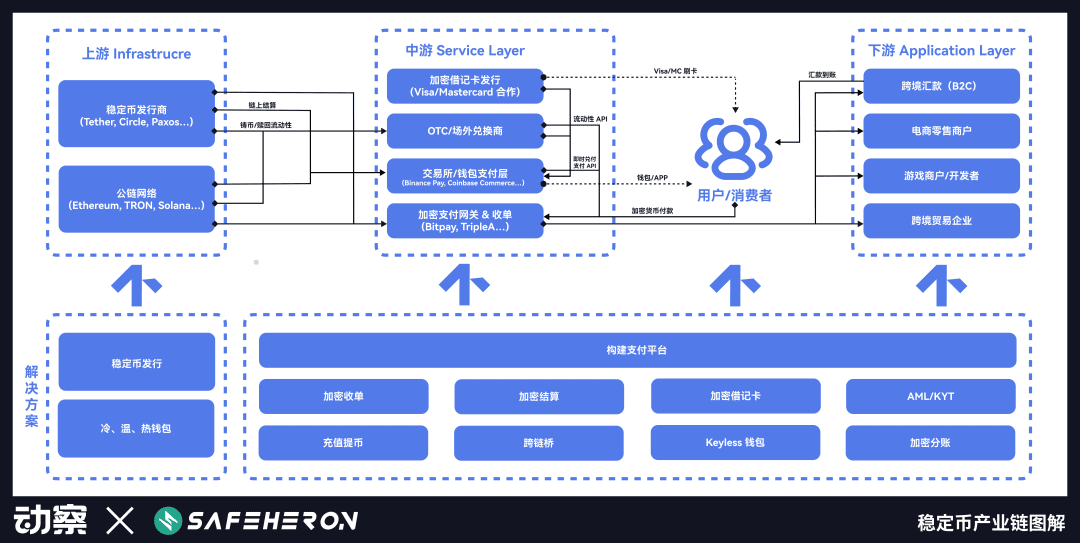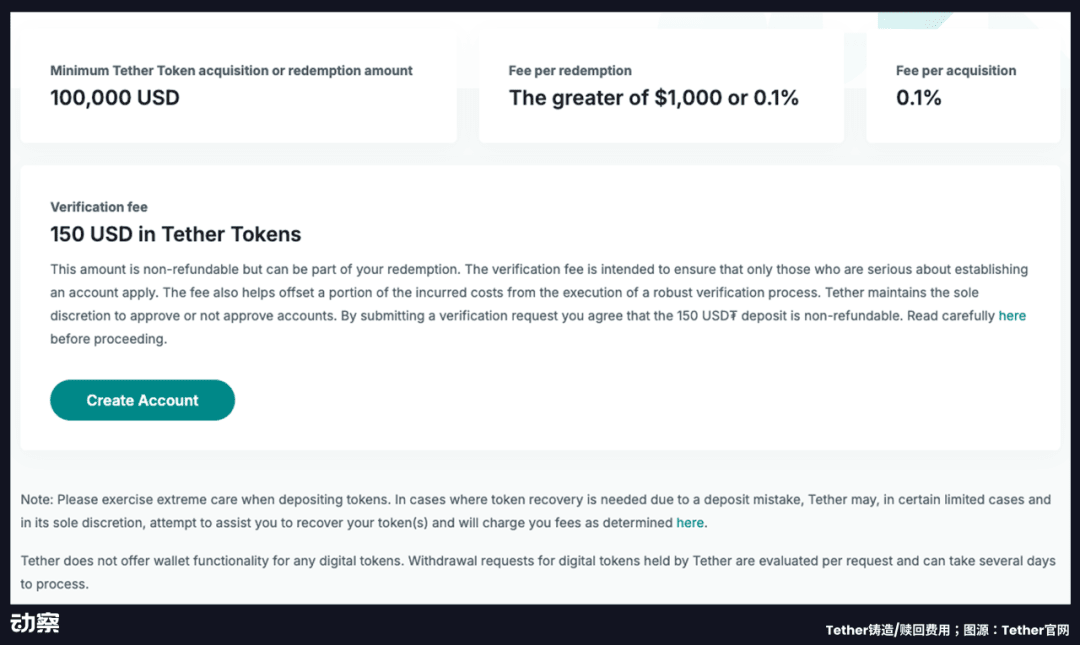

Image source: (The Great Era)
From Wall Street investment banks to tech companies in the Bay Area, and to financial giants and payment platforms in Asia, more and more enterprises are focusing on the same business - stablecoin issuance.
Under scale effects, the marginal issuance cost for stablecoin issuers is zero, and in their eyes, this looks like a guaranteed arbitrage game. In the current global interest rate environment, the profit from interest rate differentials is incredibly tempting, allowing stablecoin issuers to simply deposit users' dollars in short-term US Treasury bonds, earning stable annual profits of 4-5% and raking in billions of dollars.
Tether and Circle have long proven that this path is feasible, and with the gradual implementation of stablecoin regulations in various regions, compliant pathways have become clearer, prompting more companies to eagerly anticipate entering the market, including FinTech giants like PayPal and Stripe. Not to mention that stablecoins inherently possess the ability to integrate with payment, cross-border settlement, and even Web3 scenarios, offering vast imaginative space.
Stablecoins have become a battleground for global financial companies.
But the problem lies here; many people only see the 'seemingly risk-free' arbitrage logic of stablecoins, ignoring that this is a capital-intensive, high-threshold business.
If a company wants to legally and compliantly issue a stablecoin, how much will it cost?
This article will break down the real costs behind a stablecoin, telling you whether this seemingly light arbitrage business is worth pursuing.
The various accounts behind stablecoin issuance
In many people's impressions, issuing a stablecoin is merely about issuing an on-chain asset, which seems to have a low technical threshold.
However, truly launching a compliant stablecoin aimed at global users involves a much more complex organizational structure and system requirements than one might imagine. It not only involves financial licenses and audits but also encompasses substantial investments in various dimensions such as fund custody, reserve management, system security, and continuous operations and maintenance.
From the perspective of costs and complexity, its overall construction requirements are no less than that of a medium-sized bank or compliant trading platform.

The first hurdle faced in issuing stablecoins is the construction of a compliance system.
They often need to simultaneously address regulatory requirements from multiple jurisdictions, obtaining key licenses such as the US MSB, New York BitLicense, EU MiCA, and Singapore VASP. Behind these licenses are detailed financial disclosures, anti-money laundering mechanisms, and ongoing monitoring and compliance reporting obligations.
In comparison to medium-sized banks with cross-border payment capabilities, the annual compliance and legal expenses for stablecoin issuers can often reach tens of millions of dollars, just to meet the most basic cross-border operational qualifications.
In addition to licenses, the establishment of KYC/AML systems is also a hard requirement. Project parties usually need to bring in mature service providers, compliance consultants, and outsourced teams to continuously operate a complete set of mechanisms for customer due diligence, on-chain reviews, and address blacklist management.
In today's tightening regulatory environment, it is nearly impossible to obtain access to major markets without establishing a robust KYC and transaction review capability.
Market analysis indicates that HashKey's total costs for applying for the Hong Kong VASP license can reach between 20 million and 50 million Hong Kong dollars, and at least 2 regulatory officers (RO) must be provided, in addition to having to cooperate with the three major accounting firms, with costs several times higher than in traditional industries.
In addition to compliance, reserve management is also a key cost in stablecoin issuance, covering both fund custody and liquidity arrangements.
On the surface, the asset-liability structure of stablecoins is not complicated; users recharge dollars, and the issuer purchases an equivalent amount of short-term US Treasury bonds.
However, once the reserve scale exceeds $1 billion or even $10 billion, the operational costs behind it will rise rapidly. Just for fund custody alone, annual fees could reach tens of millions of dollars; while government bond trading, clearing processes, and liquidity management not only incur additional costs but also highly depend on the collaboration and execution of professional teams and financial institutions.
More critically, to ensure an 'immediate redemption' user experience, the issuer must prepare sufficient off-chain liquidity positions to respond to large redemption requests during extreme market conditions.
This configuration logic is very close to the risk preparation mechanisms of traditional money market funds or clearing banks, far from being as simple as 'smart contract locking'.
To support this architecture, issuers must also establish a highly stable and auditable technical system that covers key financial processes both on-chain and off-chain. This typically includes smart contract deployment, multi-chain minting, cross-chain bridge configuration, wallet whitelisting mechanisms, clearing systems, node operations and maintenance, security risk control systems, and API integration, among others.
These systems must not only support large-scale transaction processing and fund flow monitoring but also be scalable to adapt to regulatory changes and business expansions.
Different from the 'light deployment' of general DeFi projects, the underlying system of stablecoins essentially serves as a 'public settlement layer', with technology and operation and maintenance costs typically in the millions of dollars annually.
Compliance, reserves, and systems are the three foundational projects for stablecoin issuance, collectively determining whether a project can achieve long-term sustainable development.
Essentially, a stablecoin is not a technical tool product but a financial infrastructure that combines trust, compliance architecture, and payment capabilities.
Only those enterprises that truly possess cross-border financial licenses, institutional-level clearing systems, on-chain and off-chain technical capabilities, and controllable distribution channels are likely to operate stablecoins as a platform-level capability.
Because of this, before deciding whether to enter this track, companies must first assess whether they have the capability to build a complete stablecoin system, including: Can they obtain continuous recognition from multiple regulatory bodies? Do they have their own or trusted custody fund systems? Can they directly control wallet, trading platform, and other channel resources to truly open up circulation?
This is not an opportunity for light entry; it's a hard battle that requires high demands on capital, systems, and long-term capabilities.
Issued a stablecoin, and then what?
Completing the issuance of a stablecoin is just the beginning.
Regulatory permissions, technical systems, and custody structures are merely prerequisites for entry. The real challenge is how to enable it to circulate.
The core competitiveness of stablecoins lies in 'whether anyone is using it'. Only when a stablecoin is supported by trading platforms, integrated by wallets, accessed by payment gateways and merchants, and ultimately used by users can it be said to have truly achieved circulation. And along this path, there are high distribution costs awaiting them.
In the stablecoin industry chain diagram released by Insight Beating in collaboration with digital asset self-custody service provider Safeheron, stablecoin issuance is merely the starting point of the entire chain; to enable stablecoins to circulate, attention must also be turned to the mid and downstream.

Taking USDT, USDC, and PYUSD as examples, we can clearly see three distinctly different circulation strategies:
· USDT initially relied on grayscale scenarios to build an irreplicable network effect, rapidly occupying market standard status thanks to its first-mover advantage;
· USDC primarily relies on channel cooperation within a compliant framework, gradually expanding via platforms like Coinbase;
Even though PYUSD is backed by PayPal, it still needs to rely on incentive measures to boost TVL and has always struggled to penetrate real use cases.
Their paths differ, yet all reveal the same fact - the competition for stablecoins lies not in issuance but in circulation. The key to success is whether they have the ability to build a distribution network.
1. The irreplicable first-mover structure of USDT
The birth of USDT stemmed from the real dilemmas faced by crypto trading platforms during that era.
In 2014, the Hong Kong-based cryptocurrency trading platform Bitfinex rapidly expanded to global users, where traders wanted to trade in dollars, but the platform consistently lacked stable dollar deposit channels.
Cross-border banking systems are hostile to cryptocurrencies, making it difficult for funds to flow between the three regions of China, Hong Kong, and Taiwan. Accounts are often shut down, and traders may face interruptions in fund flows at any time.
Against this backdrop, Tether was born. It initially operated based on Bitcoin's Omni protocol, with a simple and direct logic: users wire dollars to Tether's bank account, and Tether then issues an equivalent amount of USDT on-chain.
This mechanism bypasses traditional banking clearing systems, allowing 'dollars' to circulate across borders 24 hours a day for the first time.
Bitfinex is Tether's first important distribution node, and more importantly, both are actually operated by the same group of people. This deeply binding structure allowed USDT to quickly gain liquidity and use cases in the early days. Tether provided a compliance-ambiguous but efficient dollar channel for Bitfinex. They conspired together, with information symmetry and aligned interests.
From a technical perspective, Tether is not complex, but it solves the pain points of crypto traders in terms of fund inflow and outflow, which has become key to occupying user mindset early on.
In 2015, with increasing volatility in the capital markets, the appeal of USDT quickly magnified. A large number of users in non-dollar regions began seeking dollar alternatives to circumvent capital controls, and Tether provided them with a 'digital dollar' solution that required no account opening or KYC and could be used as long as there was internet access.
For many users, USDT is not just a tool but a means of hedging.
The ICO boom of 2017 was a critical moment for Tether to achieve PMF. After the mainnet launch of Ethereum, there was an explosion of ERC-20 projects, and trading platforms shifted to trading crypto asset pairs, making USDT an instant 'dollar substitute' in the altcoin market. By using USDT, traders could freely traverse between platforms like Binance and Poloniex to complete trades without repeatedly moving funds in and out.
Interestingly, Tether has never actively spent money on promotion.
Unlike general stablecoins that adopt subsidy strategies to expand market share in their early stages, Tether has never actively subsidized trading platforms or users for using its services.
On the contrary, Tether charges a fee of 0.1% for each minting and redemption, and the minimum redemption threshold is as high as $100,000, in addition to a verification fee of 150 USDT.
For institutions wishing to directly access their systems, this charging mechanism almost constitutes a 'reverse promotion' strategy. Because it is not selling a product but setting standards. The cryptocurrency trading network has long been built around USDT, and any participant wishing to connect to this network must align with it.

Since 2019, USDT has almost become synonymous with 'on-chain dollars'. Despite facing regulatory scrutiny, media skepticism, and reserve controversies, USDT's market share and circulation continue to rise.
By 2023, USDT has become the most widely used stablecoin in non-US markets, especially in countries in the Global South. In areas with high inflation like Argentina, Nigeria, Turkey, and Ukraine, USDT is used for wage payments, international remittances, and even replacing local currencies.
Tether's real moat has never been code or asset transparency but the trust paths and distribution networks it established early on in the Chinese-speaking crypto trading community. This network began in Hong Kong and used Greater China as a springboard, gradually extending to the entire non-Western world.
This 'first mover is the standard' advantage also means that Tether no longer needs to prove who it is to users; rather, the market must adapt to the circulation system it has already established.
2. Why does Circle rely on Coinbase
Unlike Tether, which grew naturally in grayscale scenarios, USDC was designed from the outset as a standardized and institutionalized financial product.
In 2018, Circle partnered with Coinbase to launch USDC, aiming to create a 'on-chain dollar' system for institutions and mainstream users within a compliant and controllable framework. To ensure governance neutrality and technical collaboration, both parties each hold 50% of the shares, establishing a joint venture called Center, responsible for the governance, issuance, and operation of USDC.
However, this governance joint venture model does not solve the key issue - how does USDC truly circulate?
……
Visit the Dongcha Beating public account to read the full article


